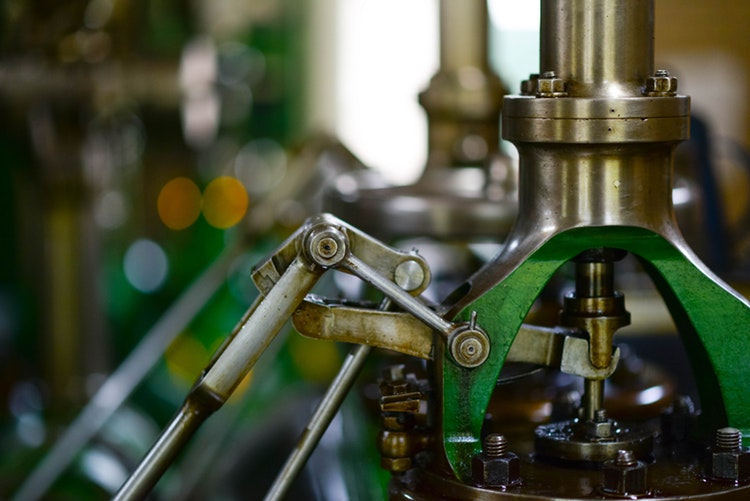
We can expect manufacturing to change in many ways over the coming years, and 3D printing is at the heart of some of the most exciting of these developments. In particular, manufacturing-as-a-service, or MaaS, is coming into its own thanks to advances in 3D printing.
But how is 3D printing revolutionizing this section of the manufacturing industry, and what are the objectives? Here are four examples.
1. Achieving Greater Product Throughput
For the most part, the speed of your average 3D printer still lags behind the speed of traditional assembly equipment. But because of its many other positive qualities and clear advantages, researchers and printing companies have every reason to continue improving the speed of this equipment. One breakthrough by MIT researchers, called “FastFFF,” or “fast fused filament fabrication,” could help the printing industry improve its speeds by as much as 10 times.
The implications for manufacturing-as-a-service are vast. Any company that’s looking to outsource some or all of its manufacturing processes does so because the barrier to entry for in-house assembly is out of reach or because they need a fast turnaround on a new product. With printers becoming ever more sophisticated, even as they provide manufacturing capabilities that are faster and cheaper than previous generations, expect more MaaS companies to step into this space and help smaller startups and cash-strapped companies get their great ideas for products off the ground without a huge day-one buy-in for assembly equipment.
2. Expanding Its Capabilities
With the question of product throughput taken care of, and with larger, faster batches now a capability for printing companies, it’s time to move on to material choices. The needs of manufacturing companies can be vast, and they usually include a variety of materials — sometimes for use in the same product.
As 3D printers have matured, they’ve brought the capabilities of the entire manufacturing industry to new heights. Thanks to Desktop Metal and companies like it, business owners now have access to “office-ready” 3D printers that can rapidly fabricate products from various metals. This is a significant innovation over previous printing technology, which was mostly capable of handling plastics and resins. It means expanding into all kinds of high-impact and heavy-duty industries with often extreme tolerances and quality standards.
The push for 3D printers that can handle a variety of metals and higher-grade plastics means the reach of these companies, including MaaS companies, should expand dramatically in the coming years. Moreover, the level of enthusiastic private investment enjoyed by Desktop Metal and other companies means the price for metal-capable 3D printers is falling back into the range formerly occupied by more wasteful, “traditional” manufacturing equipment.
3. Creating Digital Inventories
Manufacturing processes require a lot of operational bandwidth, resources and oversight. When you factor in the demand for bespoke or customized parts, plus the requirements of product R&D, testing, prototyping and further testing, you see how the actual assembly apparatus is just one piece of the larger operational puzzle. You also see why and how a MaaS company could provide significant value for a partner company by taking some of this work off their plate. Look for MaaS companies as a way to — if not replace your in-house assembly processes entirely — at least complement it by outsourcing some complex or custom jobs.
Another opportunity brought about by partnering with a MaaS company is the notion of building a digital inventory. Thanks to the versatility of 3D printers, MaaS services can provide your company with a partner who can churn out orders as they come in, working from a catalog of products with many more customizable variations than your in-house manufacturing process could manage.
Your company will still provide the designs and customizable features, but only concentrate on manufacturing “standard” runs of products for a general audience. Your MaaS partner, in turn, would handle special jobs and fill orders for customized variants from your digital inventory. This kind of relationship saves you from building up a physical inventory of specialized products and helps you focus on product development and improvement rather than changing over machines and tools between batches.
4. Bringing Good Ideas to Market Faster
We’ve focused so far on established companies using MaaS to achieve greater operational efficiency or cut costs. But 3D printing is more than a new asset in the big business toolkit — it represents the democratization of product invention itself. The cost savings are real, that’s true — additive manufacturing like 3D printing eliminates a considerable amount of the waste produced by CNC machines and similar setups, which waste up to 60 percent of raw materials. A MaaS partner ensures newer companies aren’t wasting their capital producing waste instead of producing functional, salable products.
The advantage of bringing down costs and buy-in means nearly anybody with a great product idea can get it off the ground, provided they can find the right partner. Thanks to cloud computing and data exchanges, manufacturing partners can trade blueprints and share their ideas for product improvements faster than ever. It means, at the end of the day, that becoming a business owner doesn’t necessarily mean you have to invest in all of the trappings and infrastructure of a business before you’ve even sold your first product. Somebody else provides the machinery. You provide the great ideas and the spirit of collaboration.
In short, 3D printing might help us bring about startups with as small a footprint as you can imagine, in part by making sure nobody ends up getting held back because they can’t afford the equipment they need to see their product through to the finish line.
With 3D printing having grown to become a more than $7.3 billion industry in 2017, it’s clear we’re looking at the future of manufacturing. But just as important as the technology itself is the new business models and productive relationships it can bring about — including MaaS.











A manufacturing-as-a-service company has developed a way to 3D print continuous carbon fiber in a production setting.